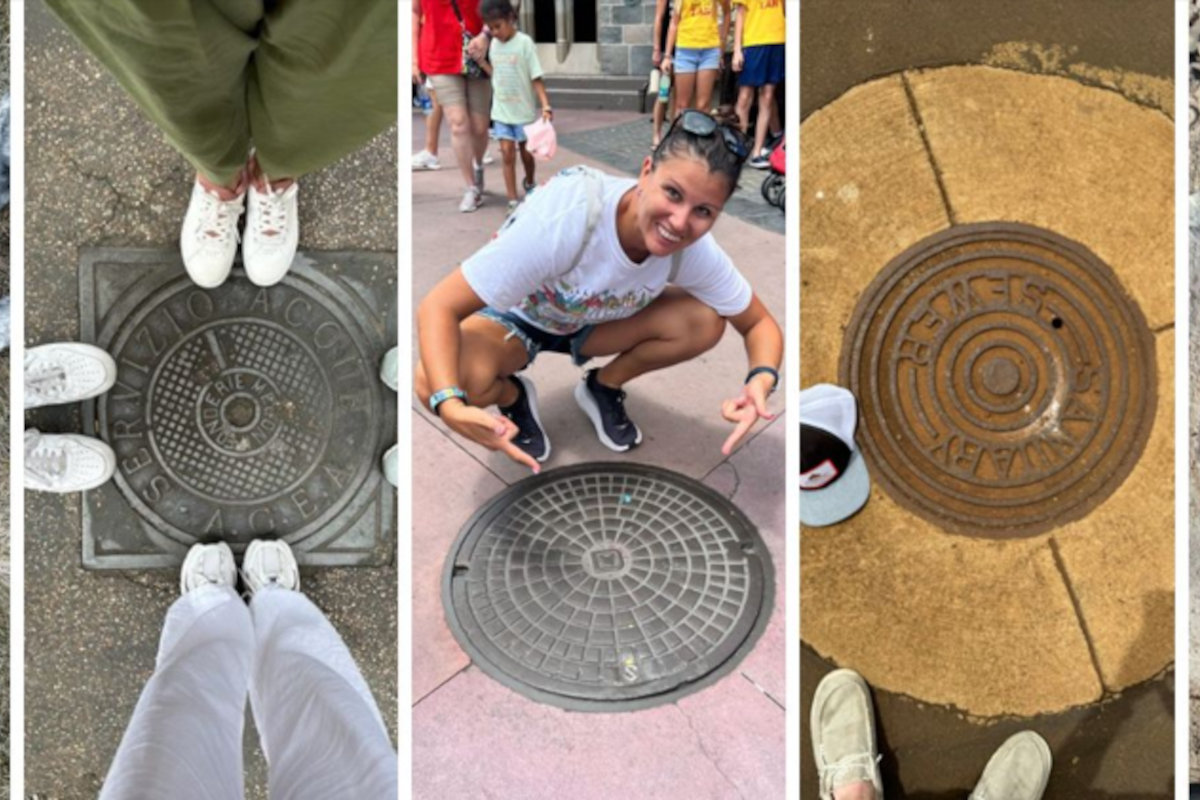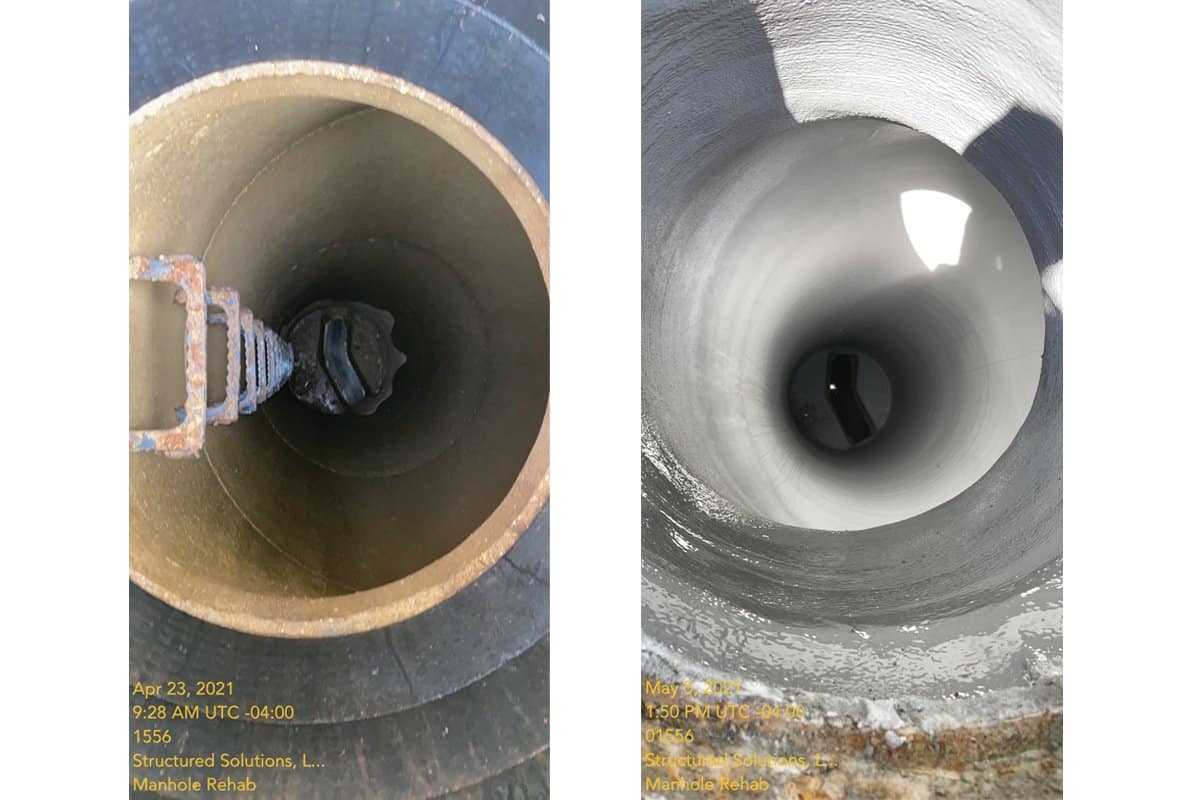
MAC Shores Up More Than 5,000 Ft of Storm Pipe at Minneapolis-St. Paul International Airport
The Metropolitan Airports Commission (MAC) oversees one of the largest airport systems in the country. With seven airports serving more than 39 million passengers each year, keeping its facilities in good working order is of critical importance to the region’s travelers.
For MAC’s largest facility – the Minneapolis-St. Paul International Airport (MSP) – maintenance of its infrastructure needs to be a carefully coordinated effort. With 3,400 acres housing 118 gates, MSP sees more than 400,000 takeoffs and landings each year: That’s over 1,000 per day!
RELATED: Granite Inliner Awarded $30M in Water, Wastewater Projects
In fall 2019, Granite Inliner was retained by MAC to line 5,324 ft of concrete storm sewer pipe ranging from 15 to 36 in. using Inliner cured-in-place pipe (CIPP). The project – in addition to the 31 CIPP lining segments – also included 40 manhole renewals and cleaning of more than 43,000 ft of pipe. The project was valued at approximately $1.47 million.
The installations were performed over a six-week period in September and October, to help the airport prepare for the winter de-icing season.
As with any transportation infrastructure that serves fuel-burning vehicles, even standard runoff is full of pollutants such as oil, fuel and rubber tire particles. During the cold-weather months, airport storm systems take in large amounts of glycol-based aircraft de-icing fluids, which need to be collected, contained and treated to avoid ground and surface water contamination.

“In the case of MSP’s storm system infrastructure, the concrete pipes were in very good physical condition; however the airport wanted to line the pipes as an extra measure of protection to contain pollutants and prevent contamination of nearby waterways,” said Dan Banken, area manager for Granite Inliner’s operations in the upper Midwest. “After all, Minnesota is known as “The Land of 10,000 Lakes.”
RELATED: Trenchless Team Effort Yields Success in Downtown Minneapolis
The project was under a strict timeline to be completed by Oct. 15, which was the airport’s official changeover date to begin glycol collection.
The project initiation process began several months in advance, as all of the project team members needed to go through a rigorous security badge application process.
The work was performed at night to minimize impact on Delta’s airport operations. Although MAC encourages operators to limit flight operations between 10:30 p.m. and 6 a.m., there was still some flight activity during the night, which required Delta to implement gate closures where work was being performed.
With so many moving parts, the project required a large coordination team including a project manager, superintendent and two project foremen to manage a timed access to the airfield project site for not only the two lining crews, but also the manhole rehabilitation and cleaning teams.
“This project required a highly efficient management effort, since installation activity was happening in direct vicinity of Delta gates,” said Rob Stensby, project manager for Granite Inliner.
The team would first develop the schedule in collaboration with Delta’s gate personnel, to ensure the gates were closed during optimum times. Next, they would review the rehab schedule with the field engineer a week in advance, who would in turn coordinate the actual gate closures and worker access.
The team had to remain agile, as sometimes gate schedules would change the day before and the team would need to adjust their plans to be working in a different area.
“We needed to maintain a lot of flexibility to ensure that no departing or arriving aircraft were affected by project activities,” said Stensby.
“We really worked to minimize the construction footprint and prevent unnecessary congestion caused by all the personnel working on the project,” he continued. “Regardless, we had a line of 20 trucks waiting to come onsite each night during the project. It was a huge coordination effort.”
Inliner CIPP is a minimally invasive technology that is used to restore aging and damaged underground sewer pipes. A felt or fiberglass tube saturated with a resin/catalyst mixture is inverted or pulled-in to the host pipe, inflated tightly against the walls of the pipe, then heated with water, steam or UV light to cure the resin — creating a “pipe within a pipe.” Inliner CIPP gives pipes increased flow capacity due to the liner’s smooth surface, meeting or exceeding the technology’s design life of 50 years.
For the MSP lining project, the crews used the inversion installation method and cured the 28 segments sized 15 in. in diameter with steam. The three 36-in. segments were cured with water, because it provides a slightly faster cure in the larger diameters.
“It was important to reinstate access to those gates as quickly as possible,” said Stensby.
The 40 manholes were lined using a cementitious product. After each lining was performed, the crews provided a 24-hour hydrostatic pressure test, to ensure that the lining was free of leaks.
Paul Blum, P.E., of St. Paul-based TKDA Engineering was the consulting engineer on the project.
Granite Inliner has a long history of serving transportation infrastructure, with MSP being just one of many recent airport projects the company has performed.
“The MSP CIPP lining project is a shining example of how our nation’s airports take great care with maintaining their infrastructure for the safety of travelers, their employees and their neighbors in the community,” said Banken. “MAC’s recognition of the importance of taking pre-emptive action on its infrastructure is highly commendable.”




